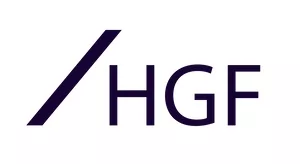- within Intellectual Property topic(s)
- with readers working within the Law Firm industries
- with readers working within the Retail & Leisure industries
Samsung Bioepis UK Ltd v Alexion Pharmaceuticals Inc [2025] EWHC 1240 (Pat) – Mr Justice Meade – 20 May 2025
The UK Patents Court has held that Samsung Bioepis' and Amgen's eculizumab biosimilars for treating PNH did not infringe Alexion's EP3167888, as the claims covered the amino acid sequence of eculizumab including the leader sequence (which is in fact cleaved off during production of the biopharmaceutical product). Importantly, the Defendants' biosimilars of eculizumab did not comprise this leader sequence. These proceedings are a reminder that incorrect amino acid claims can be fatal in infringement proceedings – even when the commercial product is a blockbuster drug.
Background
Alexion brought patent infringement actions against Samsung Bioepis ("SB") and Amgen in May 2024, alleging that their respective biosimilar products infringed the UK patent derived from European Patent No. 3167888B1 ("Patent"). The dispute related to Alexion's blockbuster recombinant humanised monoclonal antibody Soliris® (International Non-proprietary Name ("INN") eculizumab), which is used in the treatment of the rare condition paroxysmal nocturnal haemoglobinuria ("PNH").
Eculizumab was originally protected by a patent family having a priority date of 2 May 1994, which provided basis for Alexion to obtain a Supplementary Protection Certificate ("SPC") that covered eculizumab until 2020. This patent family did not specifically disclose the amino acid sequence of eculizumab.
In 1999, Alexion submitted a sequence of eculizumab to Chemical Abstracts Service ("CAS") in order to obtain an INN for eculizumab, which was initially published in 2002 and later on in 2003. During this time, clinical work on eculizumab continued. None of the CAS submissions disclosed the specific amino acid sequence of eculizumab.
Alexion continued to seek patent protection for eculizumab including a PCT filed in March 2007 (WO 2007/106585) ("WO '585") which covered the use of a compound that inhibits C5b-9 (i.e., eculizumab) to improve the quality of life in a patient with PNH.
In 2009 Alexion realised the sequence submitted to CAS had an error and re-submitted a corrected sequence. Accordingly, the amino acid sequence of eculizumab had not, prior to this 2009 CAS amendment, actually been disclosed. In fact, WO '585 was the first disclosure of the correct amino acid sequence of eculizumab.
As the sequence of eculizumab did not form part of the state of the art at the time of filing WO '585, Alexion was seeking protection for eculizumab as such rather than solely for its medical use.
However, a further error (separate to the CAS error) emerged. In the WO '585 family, the claimed amino acid sequence (SEQ ID NO: 4) included the eculizumab sequence plus an extra 22 amino acids at the N-terminal (the leader sequence). During protein production typically the leader sequence is cleaved off. Accordingly, eculizumab itself does not in fact comprise this leader sequence. Alexion attempted to amend the claims at the EPO so as to not claim the additional 22 amino acids but these amendments were rejected for added matter.
Claim construction and infringement
Mr Justice Meade agreed with the Defendants' claim construction:
- the language of the claims – SEQ ID NO: 4 was of scientific language that would generally be expected to be precise and the use of the drafting convention that "consisting of" specifies exactly what must be present (paragraph [208]); and
- the skilled person would understand that the Patent was trying to claim something new and the "whole specification reads as if eculizumab was old and what was being contributed was new ways of using it" (paragraph [209]). Therefore, the skilled person would not expect the claims to be covering something old, such as eculizumab.
The Judge was critical of some of Alexion's arguments, noting that "patents do sometimes claim things which are suboptimal or whose purpose is not entirely evident", however he concluded that such circumstances are "not a licence to rewrite the claims". Accordingly, Meade J held that the Defendants' eculizumab biosimilars did not infringe the Patent. It should be noted that neither party sought to argue that the doctrine of equivalents applied.
Meade J observed that had he agreed with Alexion's construction of its claims, the Patent would have been held invalid as it was obvious over the prior art.
Meade J dismissed the Defendants arguments based on the file history. In accordance with Actavis v Eli Lilly,1 the Judge noted that that claims were not ambiguous, and even if they were, he could not see how the file could "unambiguously resolve" the point.
Parallel UPC Proceedings
Alexion had also brought infringement proceedings against the Defendants at the UPC and sought a preliminary injunction on the basis of the Patent. The PI was rejected by both the UPC's Hamburg Local Division and Court of Appeal ("UPC CoA").
The UPC CoA noted that during prosecution before the EPO's Technical Boards of Appeal, Alexion had submitted that the antibody with the leader sequence might bind the relevant protein but said that the position had changed in Alexion's arguments before it.
The UPC CoA held that the claims were limited to eculizumab with the 22 amino acid leader sequence and were invalid for insufficiency. Although, his Judgment on validity was made on a different basis, Meade J noted that his decision was consistent with that of the CoA on claim construction which "fortified" him in his conclusion, although he also made clear such consistency was not necessary.
Meade J also observed that although not material to his decision making, that "the UPC proceedings ... further illustrate[d] Alexion's ever-changing positions".
Conclusion
This Judgment highlights the importance in ensuring the accuracy of sequence information in patent applications and that a simple error in a single sequence has the ability to render a patent covering a blockbuster drug unenforceable. It also confirms that file wrapper estoppel is rarely useful before the UK Patents Court. It is interesting to note that, as with judgments of key national patents courts, the UK patent judges are considering substantive parallel judgments from the UPC also.
This case serves as a reminder that with increased focus on harmonisation in the EPC, running consistent arguments across different European jurisdictions can be important. Here, the patentee's changing position on key issues was looked at negatively by both the UPC and the UK Patents Court.
Footnote
1. Actavis v Eli Lilly [2017] UKSC 48 see [228]-[229].
The content of this article is intended to provide a general guide to the subject matter. Specialist advice should be sought about your specific circumstances.




